1
HOME > Fashion History >
THE HISTORY OF THE ALOHA SHIRT
YOU’VE GOT TO STAY COOL WHEN THE TROPICAL SUN IS BEATING DOWN ON YOU FROM ABOVE
Written by Ivan Yaskey in Fashion History on the 9th August 2022
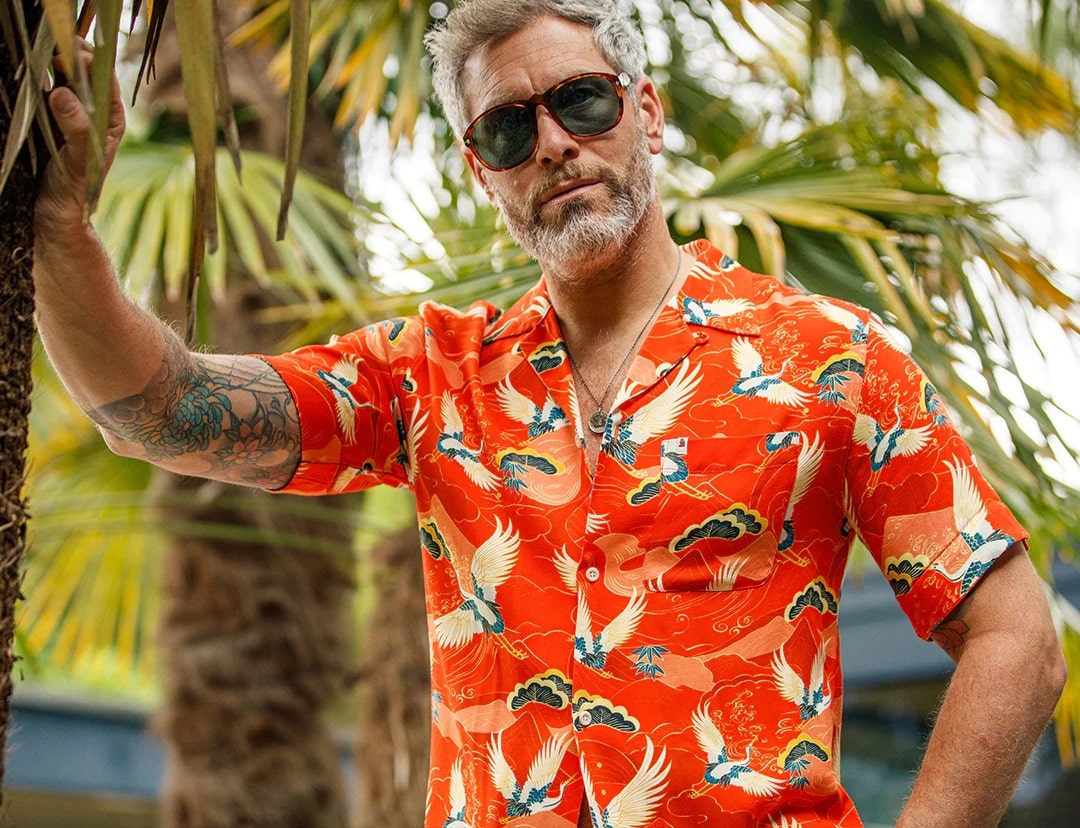
Fashion signals status and aspiration – where you’ve gone and, in most cases, what it took to get there. The aloha shirt’s more widespread appeal stems from this notion, particularly the expense and celebrity-like endeavour it used to mean to make the journey from the mainland United States. At the same time, the garment is more than an allusion to an Elvis movie or a cruise starting off the coast of California. Rather, its lightweight, silky construction and prints evoking both the islands’ history, multi-ethnic heritage, and landscapes embody the Hawaii of the 20th century – specifically, an East-meets-West-meets-Polynesian cultural confluence – and the pervasive need that, no matter where you’re from, you’ve got to stay cool when the tropical sun is beating down on you from above.
While the aloha shirt – also frequently called a “Hawaiian shirt” due to its origins – often comes off as a symbol of 20th century excess, it periodically returns to the menswear lexicon, often through a wave of oversized fits and bold prints. This ebb-and-flow relegates it occasionally to a piece of dated vacation wear, worn only if you’re planning on attending a cruise skewing older, and then helps it surge forward as an in-demand summertime garment. With brands from Gucci, Prada, and Celine to Casablanca, Double Rainbouu, and Wacko Maria trotting out their own interpretations, it seems like the right time to visit its varied and complicated history.
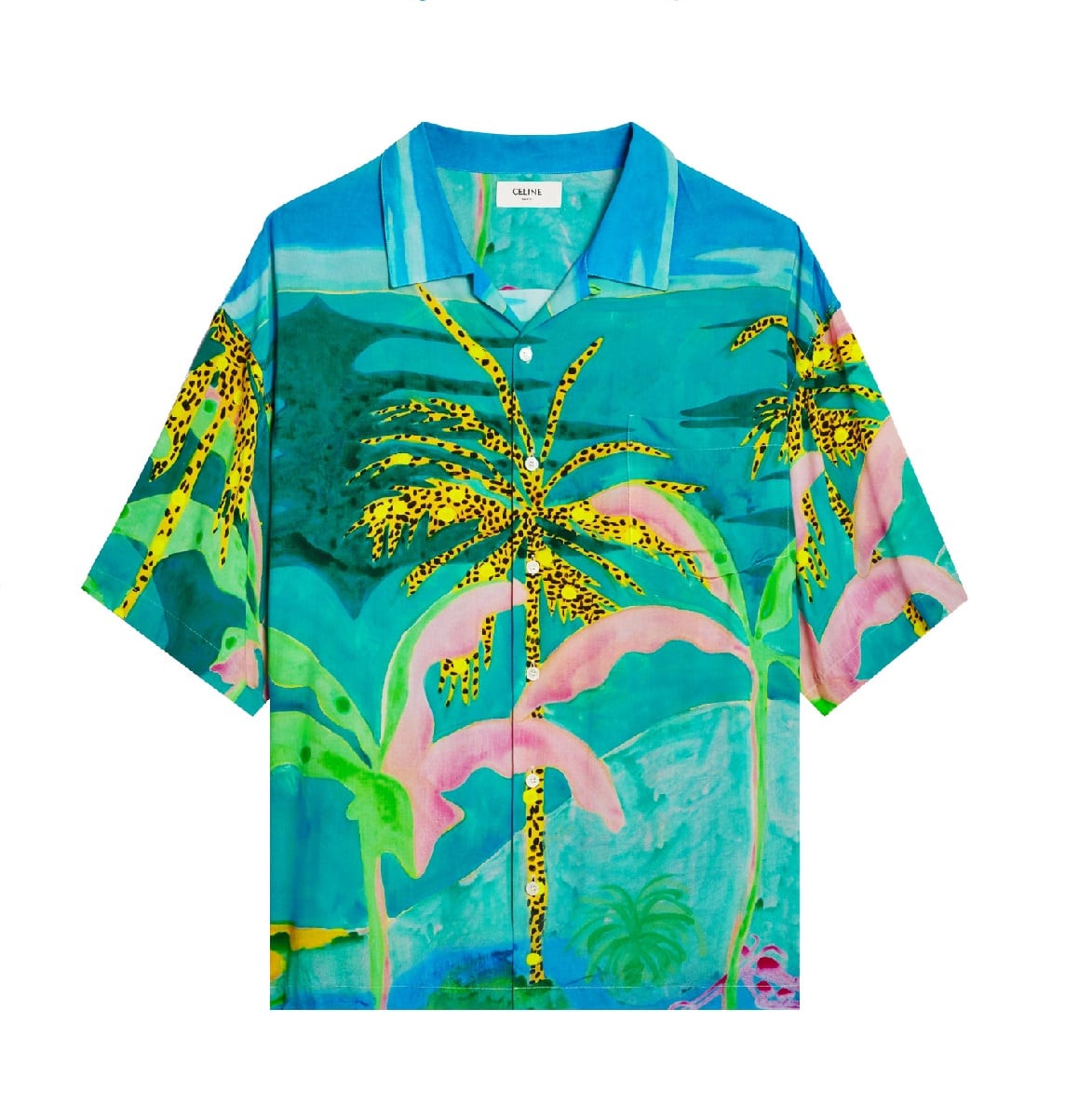
What is an Aloha Shirt?
If you’re strictly talking about construction, the modern-day – or at least from the mid-20th century onward – aloha shirt features a handful of quintessential elements. It starts with a boxy, wider-cut design that falls loosely over the wearer and frequently includes a double-notch or camp collar, although this isn’t always a requirement. The shape is said to allude to the palaka, a sailor-inspired shirt worn by plantation workers on the islands. At the same time, the hem is intended to be worn untucked, like a Filipino barong tagalog. Initially, kabe crepe fabric, cut from kimonos, was used, but that’s since been replaced with silk, nylon, rayon, or viscose – or, at lower-price points, polyester. Shape and material lean toward practical: You should feel the breeze and like your skin can breathe. To some extent, these aspects have made the aloha shirt a must-bring for any type of tropical vacation. Visually, however, the graphics set the aloha shirt apart from a barong tagalog or standard camp shirt. Landscape prints to “chop suey”-style graphics initially depicted Japanese landscapes of mountains and cherry blossoms and, following World War II, began to capture the islands’ essence from a similar perspective.
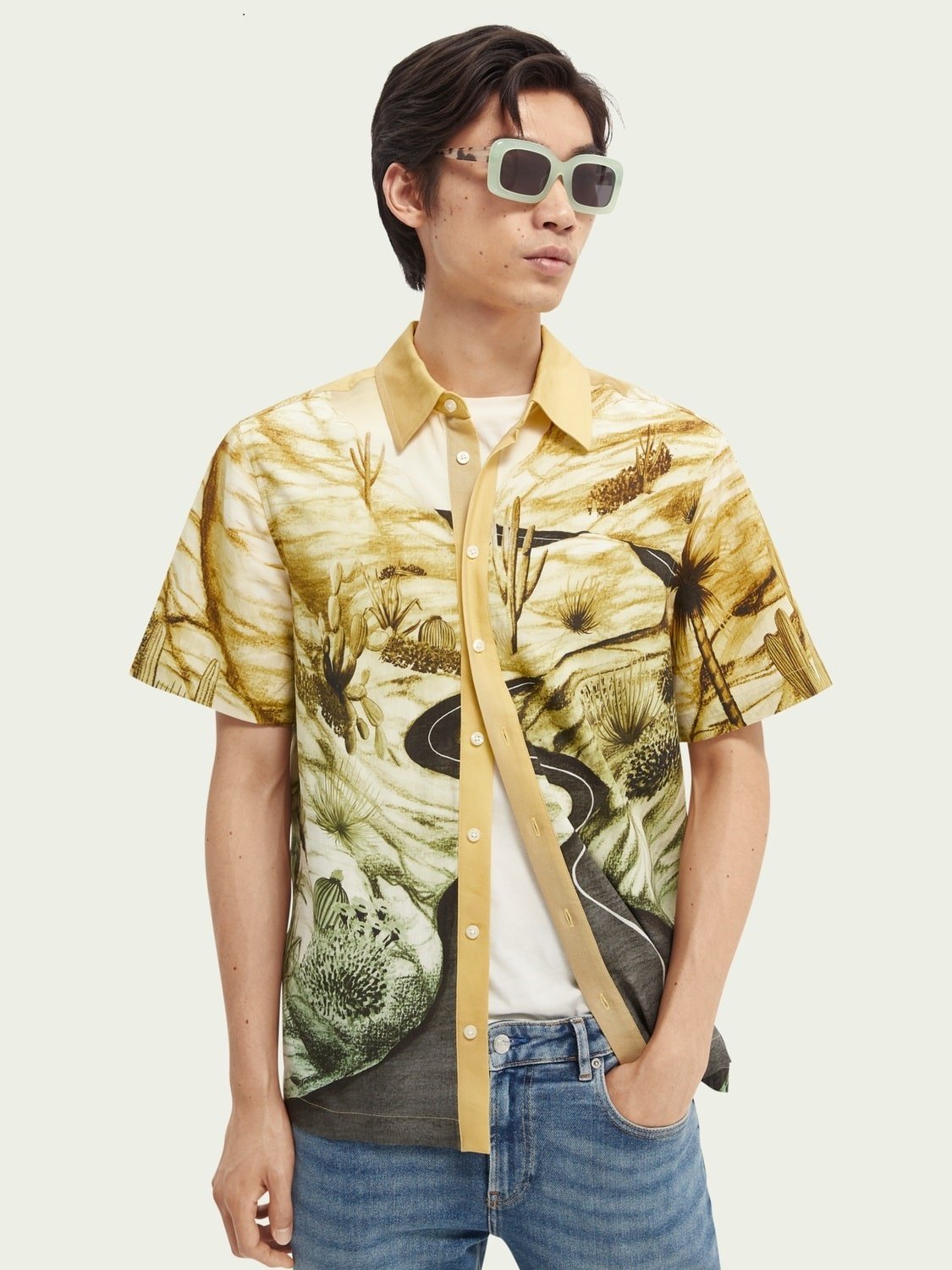
Origins of the Aloha Shirt
The aloha shirt’s origins have two routes that eventually intersected in the 1920s and ‘30s and merged from thereon. Pop culture wise, the garment’s amplification moment came from the United States’ fascination with Hawaiian culture in the first few decades of the 20th century, a trend manifesting more through music than fashion. More significantly, however, is the route British explorer Captain James Cook took through the Pacific in the late 18th century. This trip introduced those living in this region to the western shirt form. This construction plus Polynesian textile techniques – for instance, floral prints in Tahiti and creating yellow and red shades with Hawaii’s kukui nut tree juice – may have resulted in a prototype at some point before the 20th century. Yet, on Hawaii itself, the garment’s direct origins are attributed to a couple of Asian immigrant tailors who crafted a men’s shirt out of imported kimono fabric, using a tails-out construction similar that of a Filipino barong tagalog. It’s estimated that Honolulu alone had over 250 tailors into the 1930s who constructed such garments. As far as the name is concerned, Musa-Shiya Shoten – a dry goods shop owned by Koichiro Miyamoto – began using “aloha shirts” in advertisements starting in 1935. The store started crafting its own custom shirts in 1920 after receiving a five-year surplus of fabric from England. Beyond the name, Musa-Shiya Shoten helped popularize the garment after actor John Barrymore stopped into the store in the 1930s and requested a custom design made with yukata cloth.
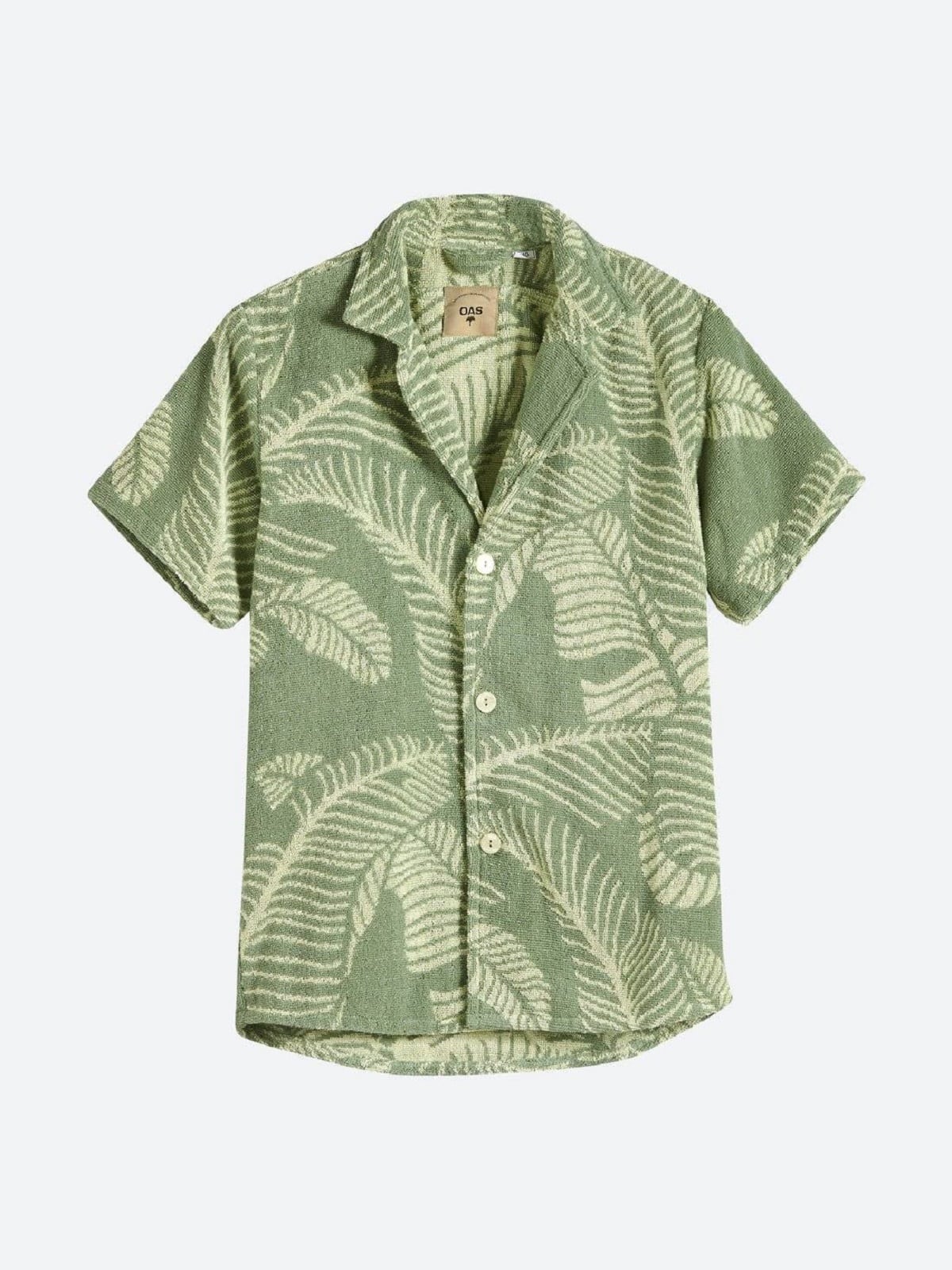
Running parallel to this is the story of King-Smith Clothiers, started by Ellery J. Chun. The son of Chinese immigrants, Chun left Hawaii to study at Yale and then returned in the early 1930s to manage his family’s dry goods store. Inspired by the flowy challis shirts worn by the islands’ Japanese youth, he started selling a similar garment made from kimono material that he labelled a “Hawaiian shirt.” Chun later changed the name of the shop to King-Smith Clothiers to appeal to a wider swath of customers. Chun then trademarked names “Aloha Sportswear” and “Aloha Shirt” by 1937. For a third piece of lore, University of Hawaii student Gordon Young was spotted in the 1920s wearing a homemade style sewn from yukata cloth that his mother allegedly designed. Young later wore the shirt to the mainland U.S., where it then drew attention at the University of Washington. Intersecting with Hawaii’s growing surf culture, Rube Hauseman claimed to have purchased silks, batiks, and crepe materials from Musa-Shiya Shoten to make shirts for the area’s beach club workers, then known as Waikiki boys. Hauseman dubbed them “rathskeller shirts” after a local club that attracted celebrities like Bing Crosby. Also involving Waikiki, Ti How Ho claimed to have sold the first official Hawaiian shirt out of his store Surfriders Sportswears Manufacturing in 1934. Regardless of its origins, multiple factors officially brought the aloha shirt over to the mainland, including soldiers returning from World War II and increased travel to the islands. This second factor brought various celebrities to Hawaii – Crosby and Barrymore, as well as Al Jolson, Douglas Fairbanks, Ronald Colman, and eventually Elvis – who took the garment back home and wore it as a symbol of their travels to the tropics.
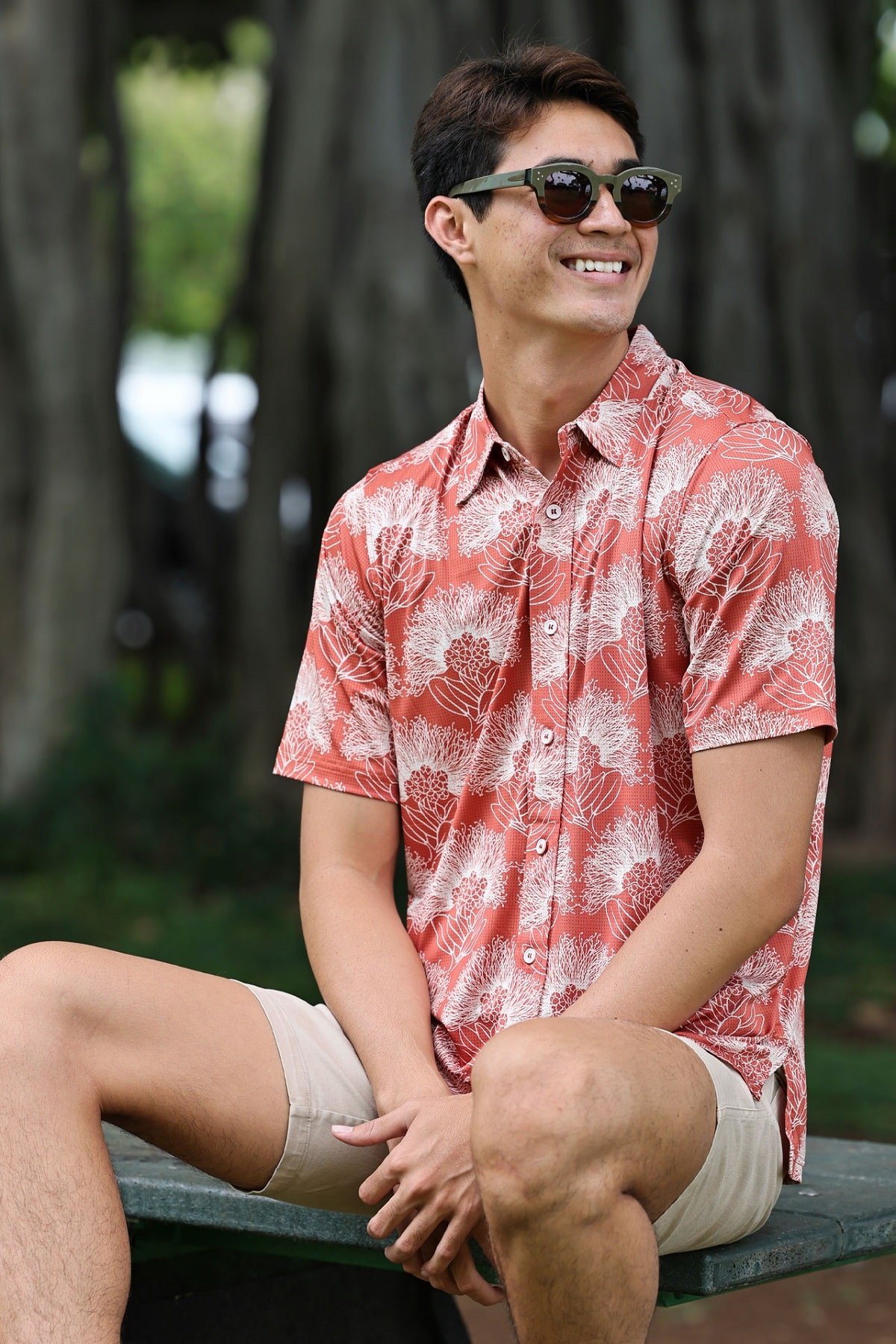
Mass production of Hawaiian shirts started in the 1930s, and by the late 1950s, it became one of the islands’ most profitable industries, with garments aimed at middle-class and wealthy tourists who could afford them. The aloha shirt’s rise coincided at the same time the U.S. was getting out of the Great Depression. Crosby’s image and accompanying songs like “Blue Hawaii” gave the garment an aspirational allure for those who couldn’t afford to travel. Graphics following World War II shifted from Japanese to similar Hawaiian imagery – hula dancers, surfers, and luaus. Production that eventually expanded to the mainland made the flowy, brightly coloured shirts more affordable in the decades that followed. As what could be described as the next level of the aloha shirt’s expansion, casual Fridays started catching on in the 1960s. Before you start thinking about khaki pants, the aloha shirt’s roots as a casual staple go back to 1946 – when Honolulu started allowing city government employees to wear the lighter-weight, more breathable style during the summer months. A year later, Aloha Week made its official debut to celebrate Hawaiian culture and bring in tourists who would subsequently fuel shirt sales. Wider adoption, courtesy of the Hawaiian Fashion Guild, continued in the 1960s, where the state’s Senate and House of Representative members would wear the garment to conduct business. Over this decade, Aloha Fridays took shape as a celebration of the weekend. The occasion started in Hawaii, before spreading to California and the rest of the U.S., where it took on the name “Casual Friday.”
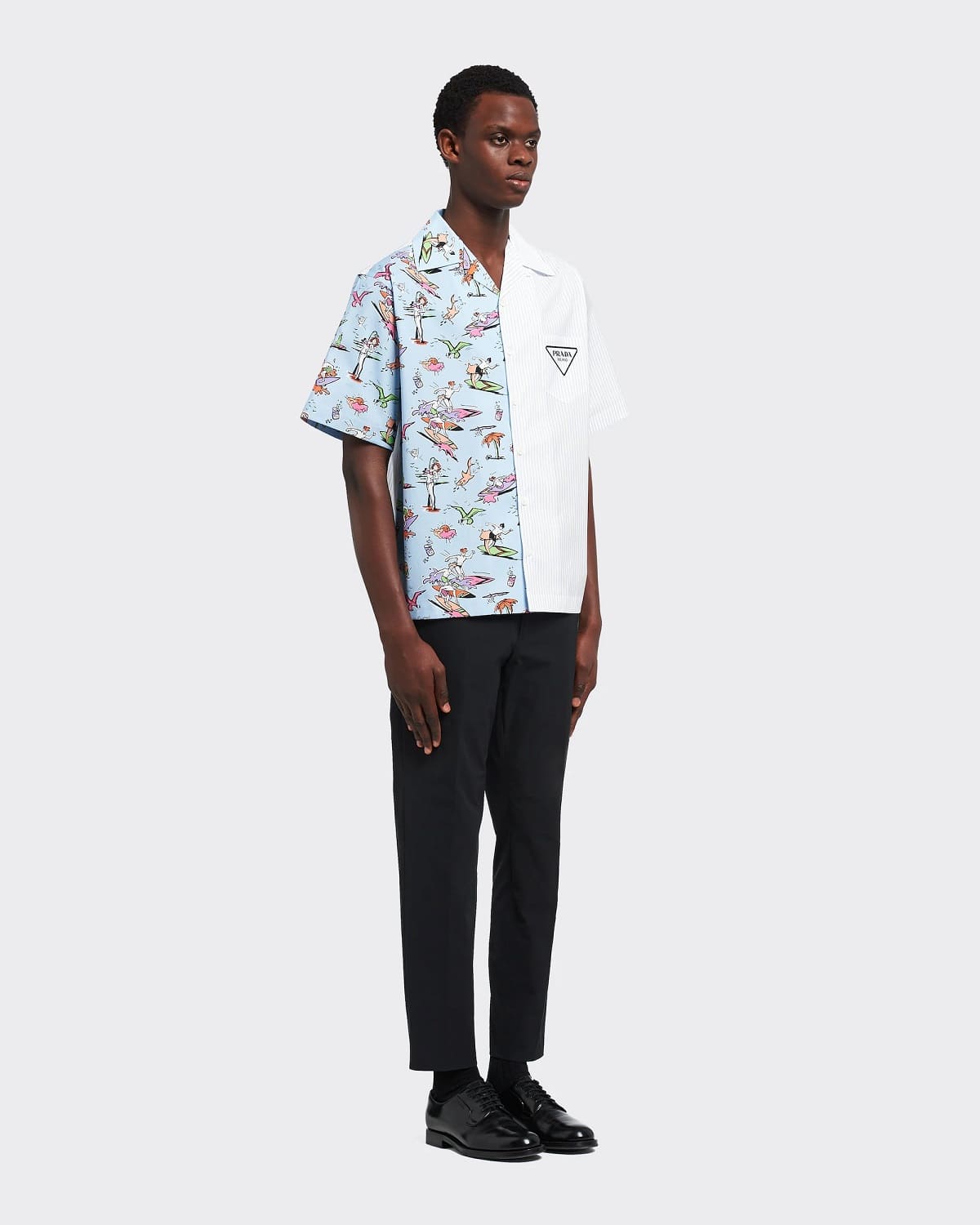
Pop Culture Symbol The aloha shirt’s loose design and bright prints convey a number of characters. Emerging from its origins and movies from the mid-20th century, it symbolizes where wealth and leisure intertwine: Whether in the context of celebrity or upper middle-class American lifestyle, wearing one indicated you could head somewhere tropical for part of the year. Yet, into the 1980s, pop culture output twisted this rather innocuous and predictably aspirational symbol. It began to take on an air of excessive, if not dangerously secured, wealth – as seen in Scarface – and was worn by characters with no qualms about engaging in some occasionally reckless behaviour. Think Scarface, too, but also Magnum, P.I. and some of Quentin Tarantino’s early offerings like True Romance and Pulp Fiction. Then, toward the end of the 1990s, Baz Luhrmann’s contemporary, Venice Beach-styled take on Romeo + Juliet fused both reckless and leisure aspects: When you’re infatuated with someone, only bright colours and loosely fitting Gucci suits will do.
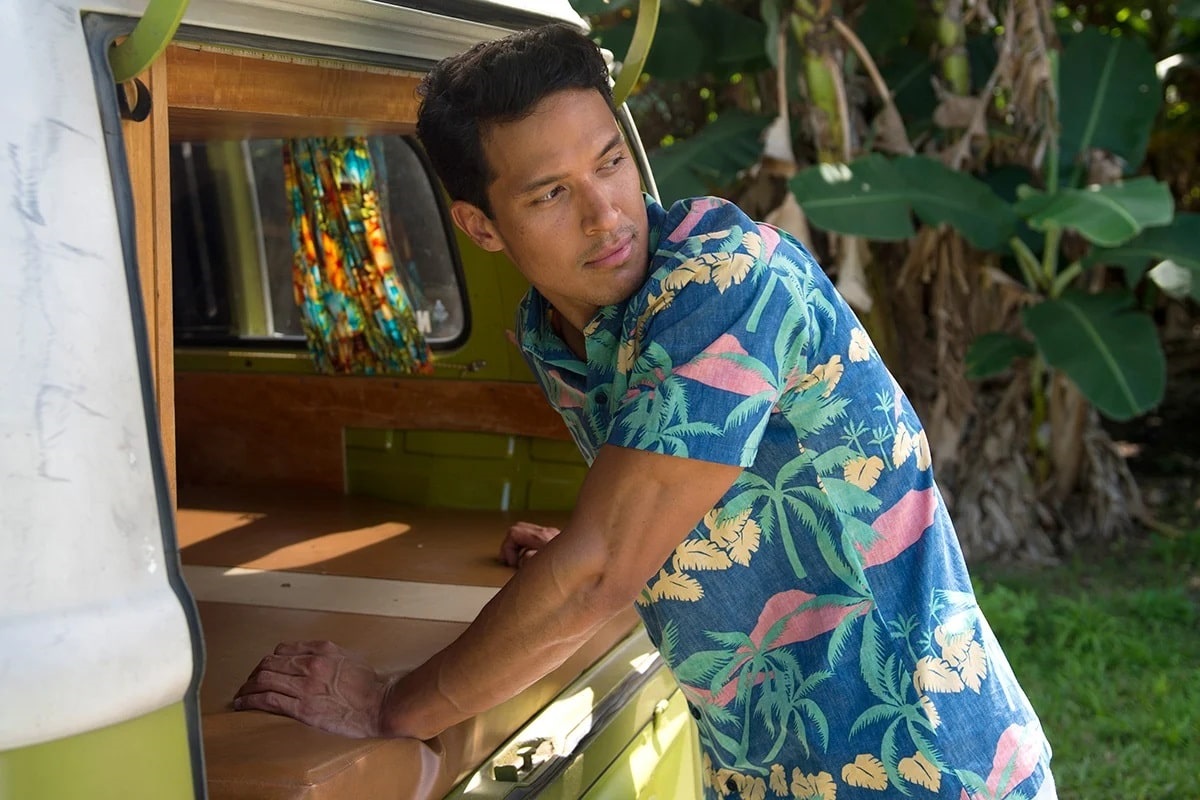
Shifts in Design The aloha shirt’s 20th century conception essentially rests on an East-meets-West appropriation of kimono material. Designs – perhaps the garment’s equally significant draw – also shifted along these lines. Pre-World War II Hawaiian shirts revolved around Japanese landscape motifs – for instance, cherry blossoms and Mount Fuji. Likely in response to the war, visuals focused on stock Hawaiian symbolism – volcanoes, hula dancers, and flora and fauna, with print designers Keiji Kawakami and Elsie Das being early adopters of Hawaiian-themed motifs. Oftentimes, one symbol substituted another: volcanoes for Mt. Fuji, for instance, or palm trees for bamboo. Beyond the fabric and cut, the print – initially hand-applied – intended to tell a story, be a piece of artwork, and stand out from standard button-up shirts at the time. Also serving as advertising for Hawaii, these prints depicted a paradise of leis, surfing over tall waves, and beach parties. Although you’d spot some landscape prints, most designs around the mid-20th century used what was described as a “chop suey” or “hash print” of multiple yet repeating elements. “Hawaii” or “aloha” may have also been incorporated into the design. By the 1950s, Alfred Shaheen – whose Tiare Tapa-print shirt Elvis sported on the cover of Blue Hawaii – had designers traveling through the Pacific and Asia for inspiration. Starting back in 2022 and likely riding off the camp collar shirt’s return back in 2017, we began to see more of these bold, splashy, often landscape-themed patterns. While some reference the garment’s early Japanese-themed imagery, they look beyond to other locale or even less-obvious pop culture themes. Secondarily, local Hawaiian brands like Sig Zane Designs, Manaola, and Kealopiko continuing to make this garment look to their own traditions – rather than the tourist fodder that took off in the 1940s. These highlight the islands’ flora and fauna, as well as ancient Hawaiian practices and narratives.

Trending
2
3
4
5
6
7
8
9
10










